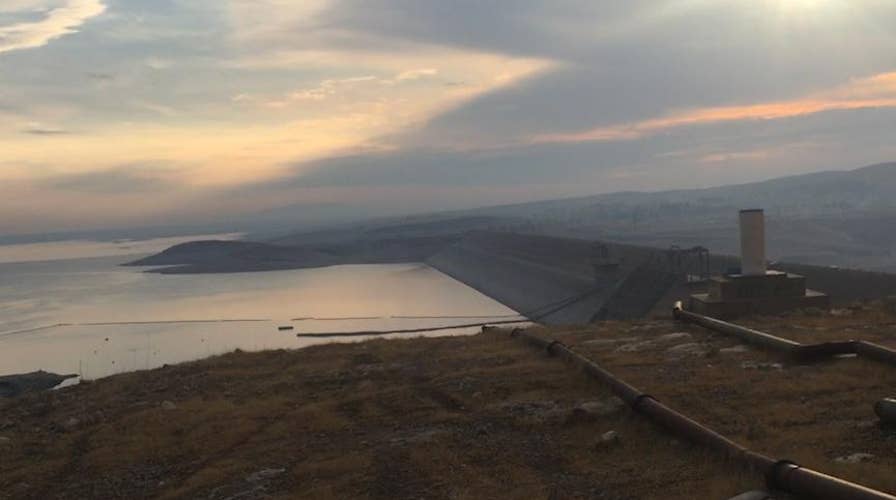Mosul Dam: Race to fix a ‘weapon of mass destruction’
The race is on to fix Mosul Dam after ISIS occupation and war left the structure in danger of collapsing, which could harm millions of lives.
EXCLUSIVE – From the crack of dawn to a starry dusk, hundreds of technicians from around the world can be seen against a backdrop of pale-colored mountains and a still, sapphire reservoir. It appears serene and picturesque, but those workers are rushing to salvage Iraq’s deteriorating Mosul Dam – which was once under ISIS control and straddles the Tigris River just 40 miles upstream from the city of Mosul.
Failure to reinforce and maintain the dam could mean unleashing what is, in effect, a potential weapon of mass destruction.
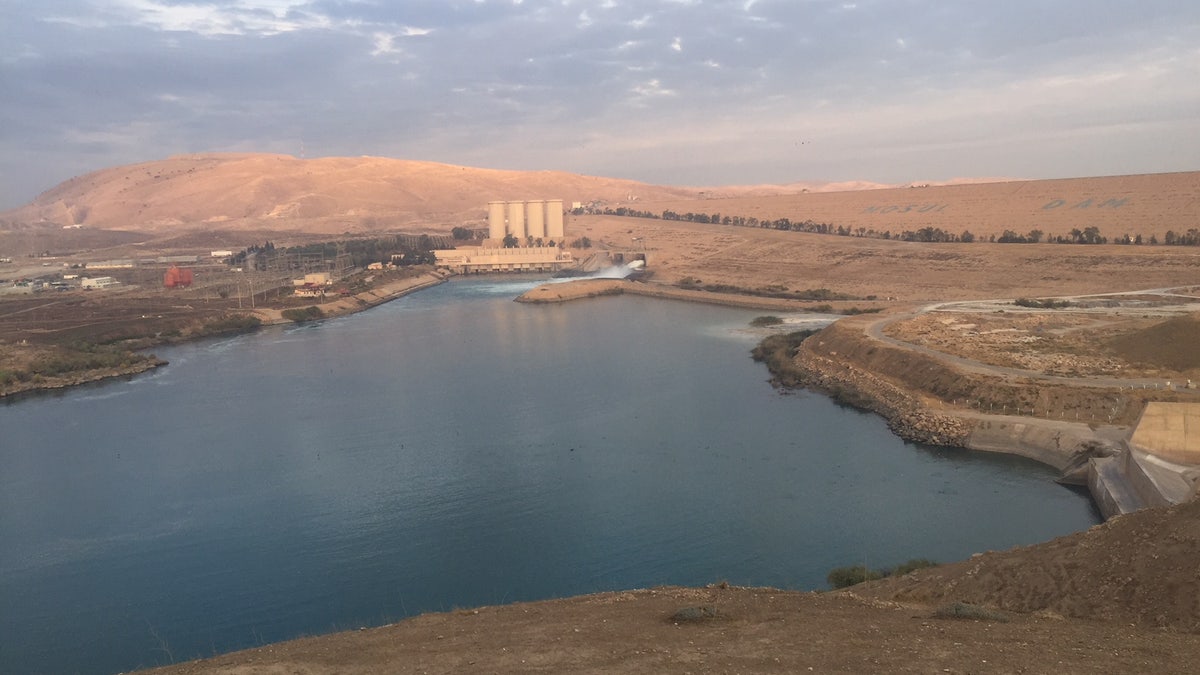
Mosul Dam (Fox News/Hollie McKay)
“When we started, the risk assessment regarding the potential fate of the dam was very high. And ISIS had stolen everything that was here,” Carlos Morales, deputy project manager for Trevi, the Italian company awarded the repair and maintenance contract to prevent catastrophe, told Fox News on a recent exclusive visit to Mosul Dam.
The dam, the largest in the country with the capacity to hold 3 trillion gallons of water, controls the flow of the Tigris River north of Mosul and supplies electricity to more than a million residents. The Army Corps of Engineers estimates that if the dam ruptures, it will send floodwaters crashing more than 200 miles downstream – swallowing villages and much of Mosul City with waves as high as 80 feet. In addition, floodwaters could reach as far as Baghdad and potentially result in the loss and displacement of millions of lives and up to $20 billion in damages.
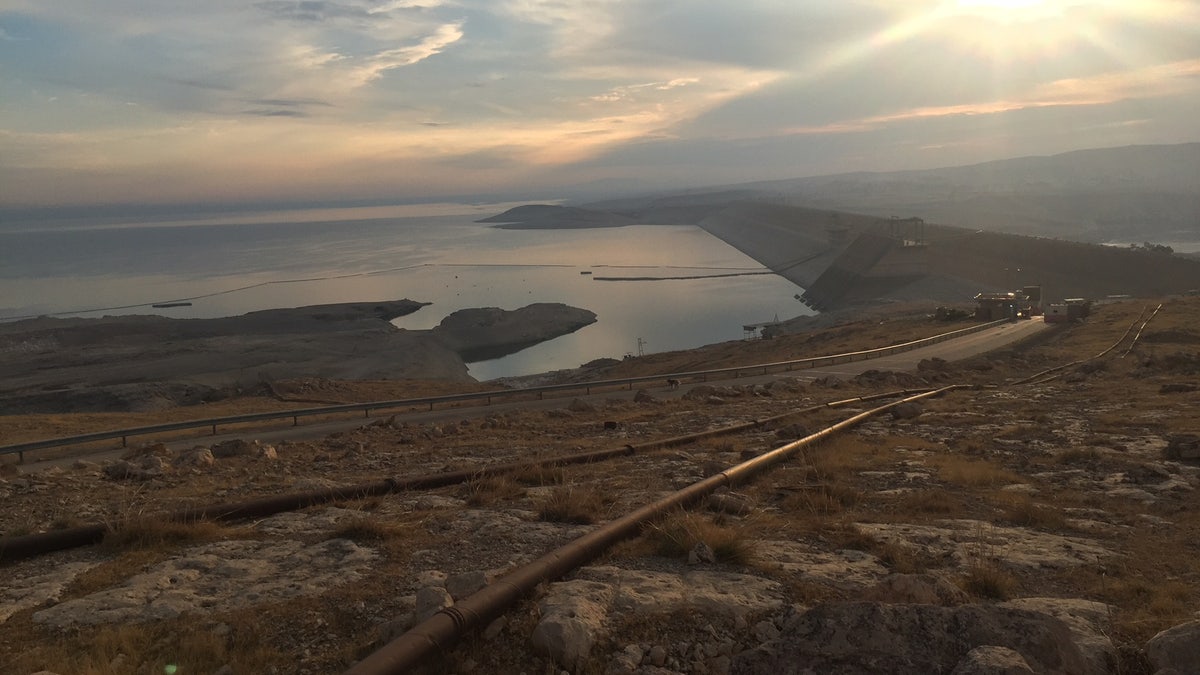
Mosul Dam (Fox News/Hollie McKay)
Furthermore, a 2015 study from the European Commission’s Science Center concluded that even a partial fissure that released just one quarter of its full capacity would be disastrous. The concern even prompted an urgent memo from the U.S. Embassy in Baghdad in March 2016, cautioning Americans to “avoid areas within three miles of the river and have a plan in case of emergency.”

Construction on Mosul Dam (Fox News/Hollie McKay)
Progress is being made. Since the emergency work began just over a year ago, some 15,000 metric tons of cement have been poured into the 370-foot structure and more than 150 miles of electrical grids have been installed. Also, some of the “critical grouting,” the pumping of a mixture of clay, water and cement into the dangerously soft bed of gypsum on which the dam wall rests has been completed. Another year of critical grouting is planned.
The dam, which has been a cause of concern since it was built in 1984 and known at the time as the “Saddam Dam,” was captured by ISIS in August 2014 in the early onslaught of the terror group. Although it only controlled the area for 10 days before being run out by Kurdish and Iraqi forces, the massive structure has deteriorated badly as it has not received mandatory maintenance from either ISIS or, subsequently, coalition forces.
ISIS CURSED, MOCKED IN MOSUL, WHERE OLD CITY REMAINS A HAUNTED WASTELAND
AFTER ISIS CAMPAIGN, IRAN-BACKED FIGHTERS IN IRAQ VOW TO DRIVE OUT US TROOPS
The Trevi Group is calling its work a “success” -- so far -- yet the intense pace of its work must be maintained for the sake of scores of lives downstream of the dam. The Iraqi government has not yet officially renewed the group’s contract, which the Iraqi government says was worth about $300 million and funded in large part with a loan from the World Bank. That contract expires this spring.
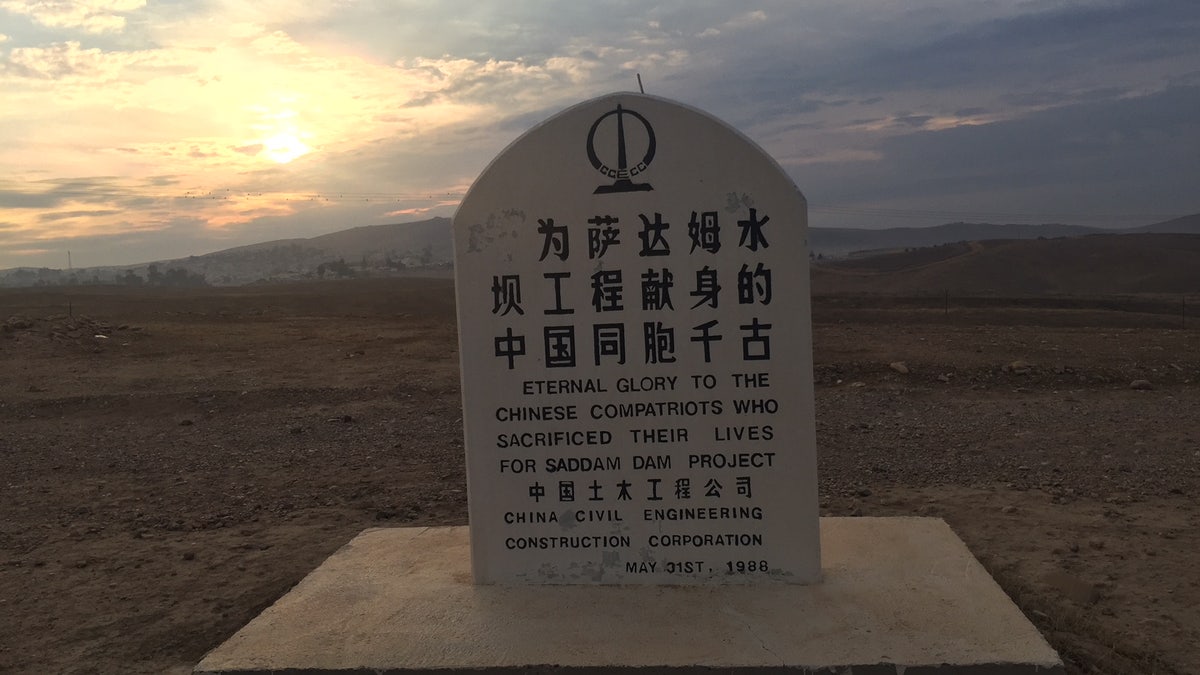
Chinese memorial for workers who died constructing Mosul Dam (Fox News/Hollie McKay)
Discussions are underway about continuing the Trevi partnership into 2019, as the Iraqi government has acknowledged ongoing risks to the dam, an officials with the Corps told Fox News.
“Some grouting results look promising, but uncertainty will remain until grouting efforts have progressed across the full length of the dam,” the representative of the Corps said. “The Ministry of Water Resources has concluded that a second year of grouting and training is necessary.”
The Trevi contract also came with the Italian government’s promise to deploy 450 troops to guard the vulnerable area while repairs are underway. Along with protecting workers, the soldiers – led by the Praesidium Task Force of the 3rd Alpine Regiment of the Italian Army – have been training Iraq’s counterterrorism forces and have implemented initiatives to support the local hospitals, schools and families inside the small villages that make up the Mosul Dam community.
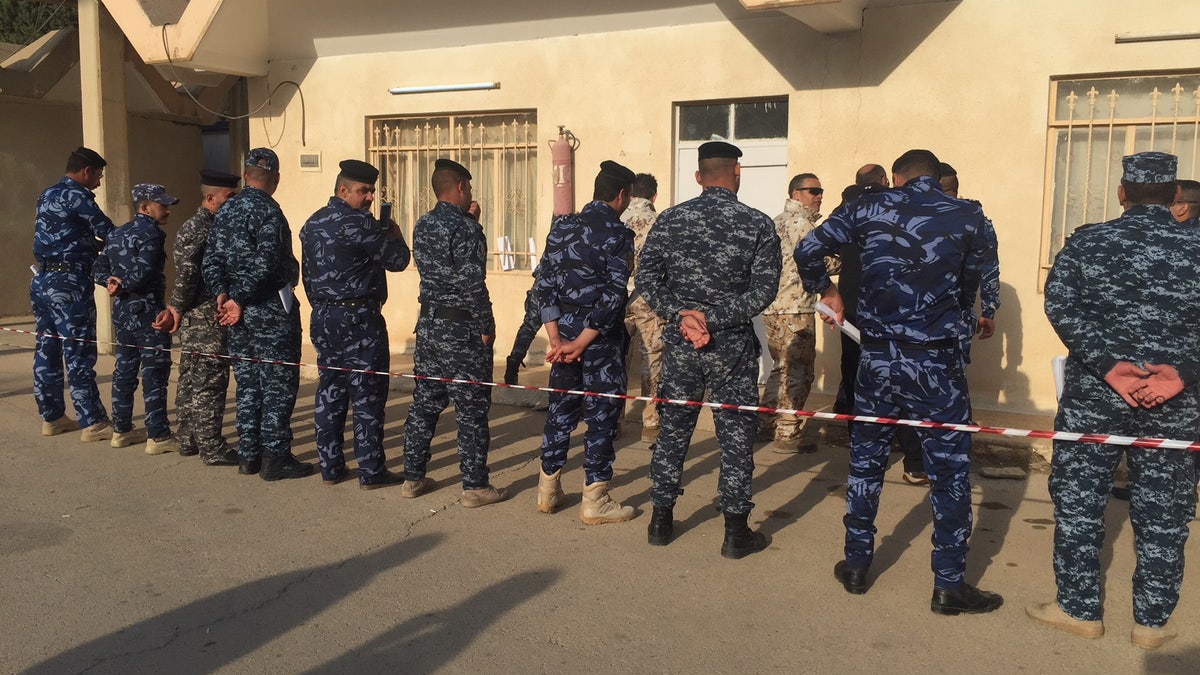
Italian army soldiers train Iraqi counterterrorism forces guarding Mosul Dam (Fox News/Hollie McKay)
“We’ve been cooperating with the Italian taskforce with the objective of protecting the dam and the people around it,” explained Iraqi counterterrorism leader, Maj. Ahmed. “But the idea long-term is for us not only to help in a military way, but in a humanitarian way, too.”

Doctor at the local Mosul Dam village clinic receives assistance from the Italian army soldiers stationed in the area (Fox News/Hollie McKay)
